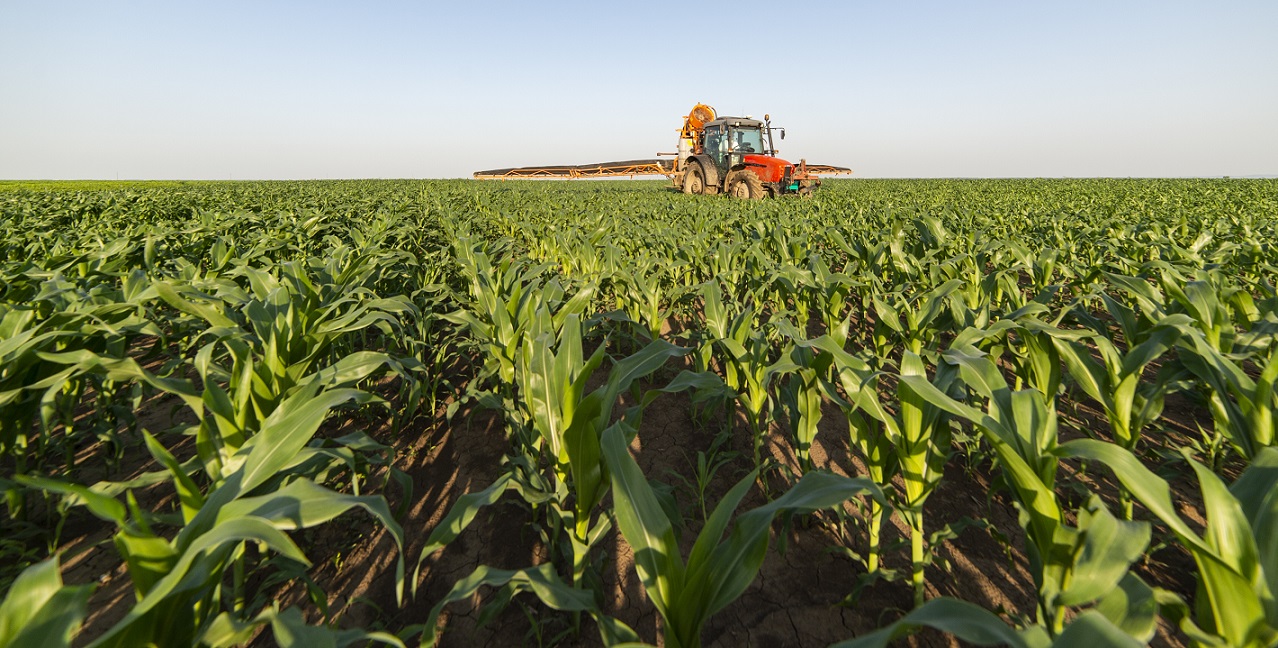
Maize absorbs very large amounts of potassium, phosphorus, magnesium and calcium. When it comes to micronutrients, it primarily needs zinc, manganese, boron and copper for proper development. The basic source of nutrients is properly selected soil fertilization. Unfortunately, unfavorable weather conditions and increasing soil salinity may hinder the absorption of nutrients by the root system. The deficit of nutrients is often exacerbated by droughts and cold weather in spring. As a consequence, inhibition of plant growth as well as symptoms of element deficiencies can be observed in maize plantations. Therefore, foliar fertilization of maize is not only recommended, but in many cases may turn out to be necessary for the proper growth and development of plants. The most common observed are deficiencies of micronutrients, but ingredients such as nitrogen, phosphorus and potassium can also be supplemented by foliar treatment.
The foliar feeding period of maize is short, it lays in the 4 to 8 leaf phase. This is the most important moment of using most nutrients, because it is the moment of the plant coding yield.
Maize is a thermophilic plant, therefore it should be remembered that in the initial stages of growth, low soil temperature may limit phosphorus uptake. When the soil temperature drops below 13°C, the availability of phosphorus is significantly reduced, which reduces the development of the root system and inhibits plant growth. To prevent this, it is worth supplementing the deficiency of this component with foliar fertilizer. Failure to replenish phosphorus deficiency manifests itself in the form of purple discoloration on the leaves.
Nitrogen deficiency, in turn, is manifested by a change in the color of the leaves from dark green to light green, and in extreme cases, v-shaped necroses appear on the tips of older leaves. Nitrogen is the basis for good plant planning.
Potassium is an element that is responsible for the proper water management in the plant. Insufficient potassium fertilization results in slower plant growth, leads to poor cob graining, which affects the yield. A characteristic symptom of a deficiency of this component are marginal chlorosis of the oldest leaves.
Maize is a plant with high nutritional requirements for magnesium, which determines the effective nitrogen uptake and, as the main component of chlorophyll, affects the proper development of maize and its yield.
Effective fertilization of plants will help to replenish micronutrient deficiencies.
Nutrients for corn should also contain microelements necessary for proper development. The key ingredients in the cultivation of maize are zinc, manganese and boron.
The most important micronutrient in maize cultivation is zinc, which, like phosphorus, affects the rapid development of the root system, that results in better uptake of nutrients and more efficient use of water. Zinc is also involved in the synthesis of auxins, thus preventing plant dwarfism. In the case of a deficiency of zinc on the leaves, chlorosis develops in the form of white stripes between the leaf veins.
Another very important element in the cultivation of maize is manganese. It plays a major role in the production of chlorophyll, photosynthesis and protein synthesis. Manganese deficiency manifests itself on the youngest leaves in the form of interveinal chlorosis. Plants well supplied with manganese are more resistant to diseases and unfavorable weather conditions.
A good corn conditioner should also contain boron, which is responsible for creating a strong stem, regulates generative processes, i.e. flowering and pollination, and also controls auxin activity. Inadequate nutrition of maize with boron in the appropriate phase leads to the loss of grains in the cob. The cobs are poorly developed, with irregular graining, and the plants are more susceptible to lodging. Boron should be used prophylactically, because even a short-term deficiency of the component may reduce the yield.
The effectiveness of spraying with foliar fertilizers is determined by several factors such as temperature, humidity or sunlight. It is best to perform foliar feeding at a temperature of 12°C to 23°C. Too low temperature may limit nutrient intake, while too high temperature may cause burns. Treatments should not be performed before the expected rain, in strong wind or in strong sunlight.
Corn is a plant that responds quickly to foliar treatments, including foliar fertilization. Properly concentrated micro and macronutrient foliar fertilizers, applied in the appropriate phase, contribute to an increase in yield.